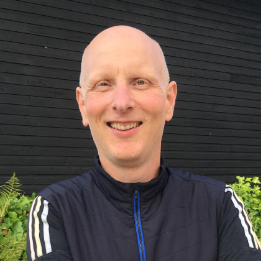We live in a complex and ever-changing world in which our job as coaches is to help others achieve their potential. Being an effective planner is an important part of that job. However, as coaches we deal with unpredictable humans whose adaptations to training are highly individual. Therefore, it should come as no surprise that science has been unsuccessful in providing high-quality evidence about the best way to plan and prescribe training.
Periodization is a theoretical model which suggests that if we enter volume and intensity into the plan in the right way, then optimal form will occur on race day. Of course, metrics in TrainingPeaks such as Training Stress Score (TSS) can be used to build periodized annual plans and workouts to bring efficiencies to the coaching process. However, the skill of coaching is not only in using such models. In this article, I’ll take you beyond TSS and explore the more human factors relating to planning for performance.
The Domain
One phrase from ultra-endurance runner Scott Jurek changed my life. He talked about “operating in a place between exhaustion and oblivion.”
As a sports scientist and coach, I’ve had the privilege of working with and knowing some exceptional athletes. What makes them stand out is not normally a high FTP, an ability to amass high training volume, or the discipline to follow a highly structured plan (although these are important). It’s an ability to operate in the place that Jurek describes, which I’ve subsequently termed “The Domain.”
Towards the final third of a race, regardless of how long the race is, things tend get tough. Multiple signals from our senses converge in our brain, telling us to slow down. For athletes to achieve their potential requires that they can override these signals so that oblivion happens momentarily after the finishing line.
Entering “The Domain” in good shape doesn’t happen accidently. It requires planning to ensure the athlete gets to the start line physically and mentally prepared. It also means nailing pacing and nutrition throughout. Finally, it requires recognition that great performances can come from suboptimal preparation, in which adversity can be a powerful motivator.
But how do we plan to enter “The Domain”?
Some Principles of Planning
“WITTW” and Marginal Gains
I start the planning process with my “What It Takes to Win” (WITTW) spreadsheet. It includes many rows of the factors needed to achieve optimal performance. It covers physiological, psychological, technical, and tactical “stuff” directly relating to performance and lifestyle attributes that are more implicitly linked. Columns, include:
- Where is the athlete at?
- Where do we want to get them to?
- How?
- How are we going to measure progress?
I’ve spent my career learning about all things related to triathlon performance. However, I rarely consult the spreadsheet because I’m acutely aware of the “bike-shedding” trap that catches many of us. This trap involves focusing on “marginal gains” while forgetting the “low hanging fruit”. Picking these fruit means exploring the following questions:
- Is the athlete training with reasonable consistency?
- Does that training have a reasonable degree of specificity?
- Can the athlete remain focused in stressful situations?
- Does the athlete have good technique?
- Has the athlete developed good ‘feel’ and pace control?
- Can they give quality feedback?
- Does the athlete have a healthy, balanced diet?
There is a coaching dichotomy here though in that many athletes like “shiny marginal gains”. Their wants and needs are not the same thing. Part of our job is to provide expert guidance which builds confidence while maintaining client retention rates. Therefore, it does no harm to build the odd marginal gain into a plan, catering for their wants as well as needs.
Individual Response & Dose-Response
Responses to training are highly individual, and the same training plan will result in different adaptations between athletes. The dose-response relationship is important in this regard. The basic premise follows that if training load is too low then adaptation will be sub-optimal, and if it is too high then maladaptation will occur.
The “ideal” dose is influenced by genetics and training history. Factors such as injury, illness, the menstrual cycle, and other life stressors are also important in determining dose. Building a complete training plan using readily quantifiable metrics such as TSS is flawed unless you take the time to understand other stressors, which are more difficult to quantify.
Fortunately, TrainingPeaks has introduced “How Did You Feel?” smilies and a “Rating of Perceived Exertion” scale as new subjective feedback features to give us greater insight into these factors, but we need to go even further to prepare our athletes for race day.
Going Beyond TSS
Building and maintaining relationships is fundamental to effective coaching. Many athletes have strange and biased beliefs (as do some coaches) about training, and these will influence their coaching expectations about how they expect you to train them. They will often resist change unless they believe there is clear benefit in doing so, especially if your coaching approach is counter to others are doing.
There is a tendency in sport for mass adoption of training practices advocated by guru coaches or pro athletes. This is called “jumping on the bandwagon,” and athletes we work with may already be on it heading in the wrong direction. However, behavioral change is a process of evolution rather than revolution. Therefore, a training plan may involve slowly steering beliefs about training in a direction different from the bandwagon, without athletes noticing that change has happened. Allowing athletes to make their own mistakes with limited coaching intervention can be helpful as they’ll be far more open to coming around to your way of thinking if they believe it was their idea in the first place.
When planning training, we must also consider what motivates athletes and what they enjoy. I recently spoke with an athlete who had just abandoned a high-performance program. She told me that she still loved her sport, but had fallen out of love with training and her training group wasn’t a happy one. The coach appeared to be too focussed on the end outcome of winning and lost sight of why the athletes were involved in sport in the first place. Rather, building and maintaining a motivational climate in which athletes embrace the challenge and enjoy training is key to achieving performance goals.
Allowing such a climate to develop often requires loosening constraints rather than using rigid plans and overly structured workouts. For example, my local running club coach prescribed a “Follow the Leader Fartlek” in the local park. There were nine athletes in each group, and we each had four minutes leading in which we determined direction, recovery, and the surfaces we ran on. While I collapsed in a heap at the end, I was happy. I could have used words and phrases such as proprioception, VO2max, speed development, and Wolff’s Law of Bone Remodeling to describe some of the likely training adaptations, but a fun, hard session captured it better.
Related is my aversion to structuring training plans around promoting specific physiological adaptations such as lactate-threshold training or a VO2max workout. However, that is not to say that I don’t use my scientific knowledge of such things to plan. Rather, I prefer to discuss training in terms of how they relate to the demands of an event and how they prepare an athlete to race. While swimming in a pool, riding an indoor trainer, or running on the track may develop a more finely-tuned engine, they do not prepare athletes to meet race demands (e.g. swimming structured laps in a 28°C pool is very different to swimming in a 14°C ocean with 500 other people and riding an alpine climb on Zwift doesn’t equate to climbing a real mountain). Therefore, group swimming in cold water or road climbing should be integrated into a plan if that’s what a race demands.
To Conclude
Planning training should ultimately prepare an athlete to meet the demands of their key races in which they are physically and mentally ready to enter “The Domain”. However, the holy grail of planning training probably does not exist. I use TrainingPeaks and other tools such as BestBikeSplit to bring efficiencies to and enhance my planning processes. To be an expert coach requires far more than great software. It requires an open mind, a passion for helping people, and a pathological desire to understand the how, why, and what in doing so.
Creativity and fun are equally important, if not more so, to science in helping athletes to enter “The Domain” willingly. That means that training plans cannot necessarily be captured in tidy spreadsheets or a Performance Management Chart. Rather, they can appear messy and may not reflect our vision of what a good plan looks like. However, if an athlete’s performance in races continues to improve, then the plan is likely to be working.

